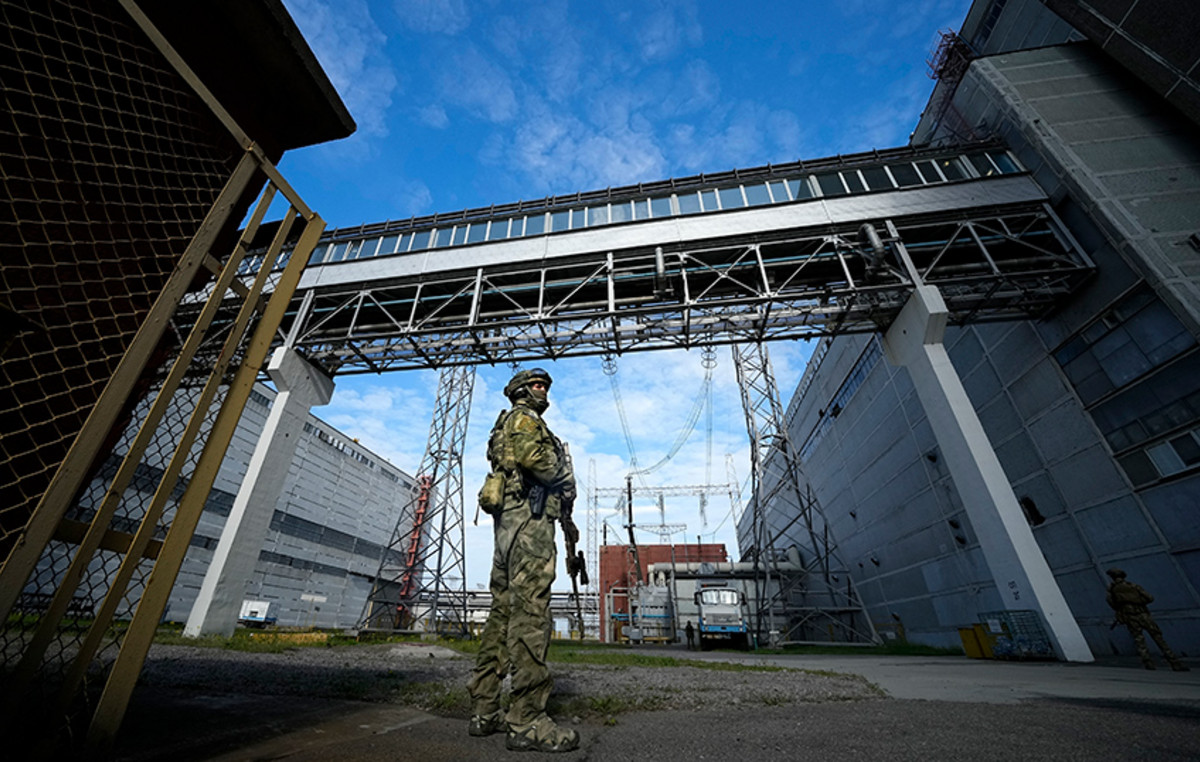A team of NASA rocket scientists is developing autonomous underwater robots that can go where humans can’t, deep beneath Antarctica’s massive ice shelves. The robots’ task is to better understand how quickly the ice is melting — and how quickly that could cause catastrophic sea level rise.
In March, scientists at NASA’s Jet Propulsion Laboratory placed a cylindrical robot in the icy waters of the Beaufort Sea, north of the U.S. state of Alaska, to collect data at a depth of 30 meters. It was the first step in the “IceNode” project.
The ultimate goal is to launch a fleet of these robots into Antarctica, which will attach themselves to the ice and capture data for long periods of time in one of the most inaccessible places on Earth.
There is an urgent need to better understand this remote and isolated continent; what happens here has global implications.
A recent body of research suggests that Antarctica’s ice may be melting in alarming and unprecedented ways, meaning that predicted sea level rise may be underestimated. If all of Antarctica’s ice sheet were to melt, it would cause sea levels to rise by about 200 feet — a catastrophe for coastal communities.
Scientists are particularly interested in understanding what is happening to Antarctica’s ice shelves, huge floating blocks of ice that extend into the ocean and are a key defense against rising sea levels, acting as a stopper to hold glaciers on land.
The “grounding line” — the point where the glacier rises from the seafloor and becomes an ice shelf — is where the most rapid melting may be occurring, as warm ocean water erodes the ice from below.
But getting a detailed view of the grounding line in the dangerous Antarctic landscape has been exceptionally difficult.
“We’ve been thinking about how to overcome these technological and logistical challenges for years, and we think we’ve found a solution,” said Ian Fenty, a climate scientist at JPL and the science lead for the IceNode project.
NASA’s plan is to release about 10 IceNode robots, each about 8 feet long and 10 inches in diameter, into the water, either through a hole in the ice or from a ship off the coast. They have no propulsion, but will be carried by ocean currents, steered by special software, to their destination in Antarctica, where they will deploy their “landing gear” — three legs that extend and attach to the ice.
Once in place, its sensors will monitor how quickly warmer, saltier ocean water is melting the ice, as well as how quickly cold meltwater is sinking.
The fleet can operate for up to a year, capturing data across seasons, NASA said.
Once they have completed their monitoring, the robots will detach from the ice, float to the ocean surface and transmit the data via satellite. This data can then be fed into computer models to improve the accuracy of sea level rise projections.
“These robots are a platform for delivering scientific instruments to the hardest-to-reach places on Earth,” said Paul Glick, a robotics mechanical engineer at JPL and principal investigator for IceNode.
The team is currently focused on developing the robots’ technical capabilities, and more testing is planned. There is currently no exact timeline for when they will be deployed to Antarctica, Glick told CNN “but ideally we would like it to be as quick as possible.”
Robots have been used to explore beneath the Antarctic ice before. A recent research project used a torpedo-shaped robot called Icefin, a remotely operated vehicle that recorded information about ocean heat, salinity and currents.
But while Icefin included a propulsion system and remained attached to a cable, through which it was controlled and could send data back, IceNodes will be fully autonomous.
The two systems complement each other, said Rob Larter, a marine geophysicist with the British Antarctic Survey who was involved in the research project using Icefin.
While Icefin can release data in real time, deployments are limited by how long a hole can be kept open before it freezes over, usually a matter of days. IceNodes will be able to collect data for much longer periods, but will not transmit it until their mission is over.
Using both machines is challenging and involves substantial risk to sophisticated equipment, Larter told CNN, “but these innovative approaches and risk-taking are necessary to discover more about the critical, hidden world beneath the ice shelves.”
Sea level could rise by up to 21 cm in 2 cities in Rio de Janeiro by 2050
This content was originally published in Ocean robot will help determine when the sea will swallow cities; find out on the CNN Brasil website.
Source: CNN Brasil
Charles Grill is a tech-savvy writer with over 3 years of experience in the field. He writes on a variety of technology-related topics and has a strong focus on the latest advancements in the industry. He is connected with several online news websites and is currently contributing to a technology-focused platform.







